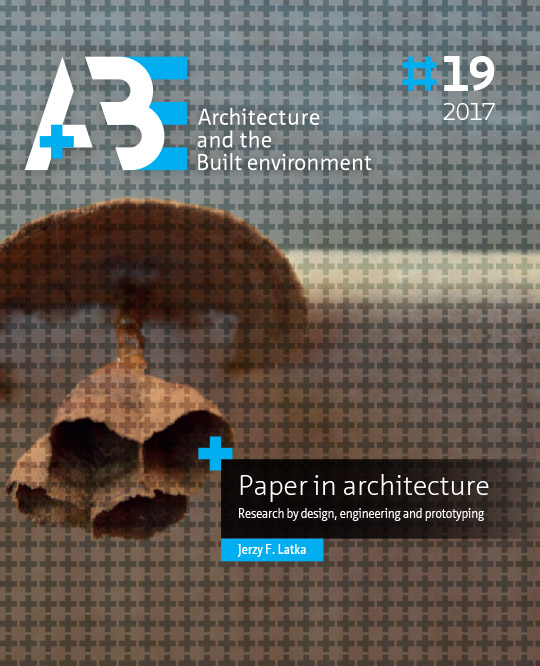Emergency and relief architecture
Motivation and guidelines for temporary shelters
DOI:
https://doi.org/10.7480/abe.2017.19.3759Abstract
The deteriorating situation of the inhabitants of many countries, especially in the Near East and Africa, has resulted in a growing number of people being forced to leave their homes. UNHCR has reported that the number of forcibly displaced people increased to 65.6 million in the year 2016 as a result of persecution, conflict, violence or human-rights violations. This was an increase of 6.1 million over the 2014 figure. It was also the highest number on record since the end of World War II. This number increased by 23.1 million in the five years since 2011.
However, in addition to the forcibly displaced people, there are many people who lost their homes because of natural disasters, and those who have become homeless for a variety of other reasons. In the year 2015, 364 natural disasters (not including epidemics and insect infestations) were recorded by EM-DAT (the International Disaster Database), which resulted in 22,773 deaths and 98.6 million affected people. Another global problem is homelessness, i.e., a situation in which people or families cannot afford the kind of shelter that is considered adequate and meets the requirements for a minimal existence. This is a problem that occurs not only in poorer countries, but also in so-called developed countries. The OECD database on affordable housing states that 1,777,308 homeless people were reported in OECD countries in 2015. As it is very hard to define or recognise a homeless person, this number may be ‘off’ by quite a significant margin.
Since 2015 there has been a large influx of people from the Near East and African countries in Europe. This influx has caused the largest migration crisis since World War II. By the end of 2016, Europe was hosting approximately 10.2 million of people of concern, including 6.6 million asylum seekers and refugees, 3 million internally displaced persons (including returnees) and more than 570,000 stateless people. There is a lot of debate on the subject of refugees and immigrants and on the policies in place to help them. However, the political discussion on this is beyond the scope of this work, so the author will not comment on it. The focus of this part of the thesis is on potential architectural solutions for people who find themselves in a difficult housing situation, for whatever reason.
In this thesis, emergency and relief architecture is understood to refer to structures, buildings and infrastructure that support people in need, such as forcibly displaced people, victims of natural disasters or homeless people.
Each of the aforementioned groups requires a different approach with regard to safety, policy and medical or psychological support. Each group is also characterised by different factors. In order to understand the differences, so as to be able to provide the right type of support, it is important that we gain an insight into the characteristics of each group.
Both emergency shelters and temporary houses can be made out of paper components. Depending on the situation, they can be either temporary or semi-permanent shelters or buildings.

